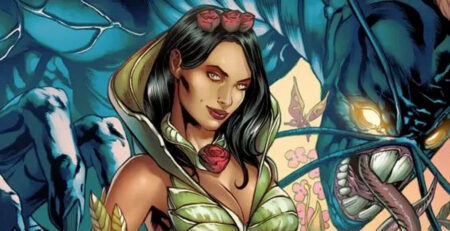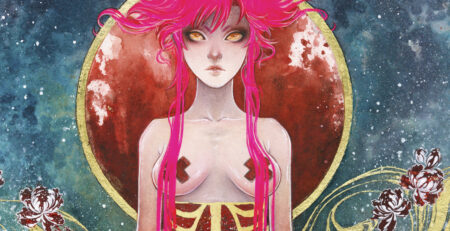Lunar Room #3
Limited series, particularly those featuring entirely new characters and worlds, must swiftly and deliberately captivate their audience. Lunar Room began by introducing the world and its central characters, delving into their issues. The second issue explored character interactions and traits while providing a deeper understanding of the past that shapes the present story.
In this third issue, Danny Lore takes us even further behind the scenes, offering an in-depth look at Cynthia “Sin” Breaker’s origins and background while propelling the overall story into a new and exciting phase. Lore masterfully weaves together character development and world-building, effortlessly blending the two as if it were the simplest task. Within just three issues, all the characters feel fully fleshed out and rich, each possessing distinct voices, personalities, and motivations. They have become as established and well-rounded as characters from stories that have spanned years or even decades, while still allowing room for surprises and revelations.
None of these characters feel as though they appeared just two issues ago; they carry weight and depth, feeling almost timeless. The glimpses we receive into the workings of this science-fiction-meets-fantasy world are intriguing. The story provides enough information to engage the reader without overwhelming them, offering tantalizing glimpses of a much larger universe lying just beyond the horizon. While it can be interesting to possess comprehensive knowledge about a story’s world, there is something even more satisfying about knowing that one is only exploring a small corner of a vast and expansive universe.
The fusion of magical fantastical elements with grounded “real-world” elements and the action sequences is executed with detailed precision and a delightful edge by Giorgia Sposito and DJ Chavis. The visual portrayal of the world contributes to its development, allowing readers to immerse themselves in a city that feels tangible yet infused with a captivating touch of magic.
Sposito’s paneling choices are excellent, effortlessly transitioning between full-page panels and pages with a variety of panel shapes, all framed by the perfect balance of white space. The action sequences are powerful and brutal, but the true tension is amplified through the variety of panels that convey the sounds of special effects and the eerie “silence,” enhanced by bloodshed, which heightens the sense of fear.
Please note that this is a condensed rewrite, capturing the key points while maintaining the essence of the original description.











